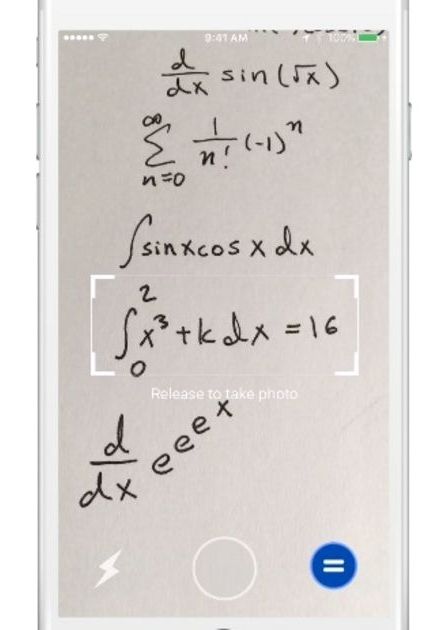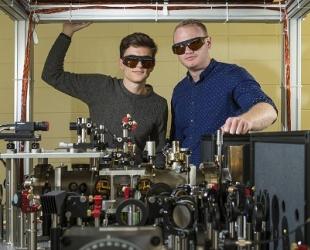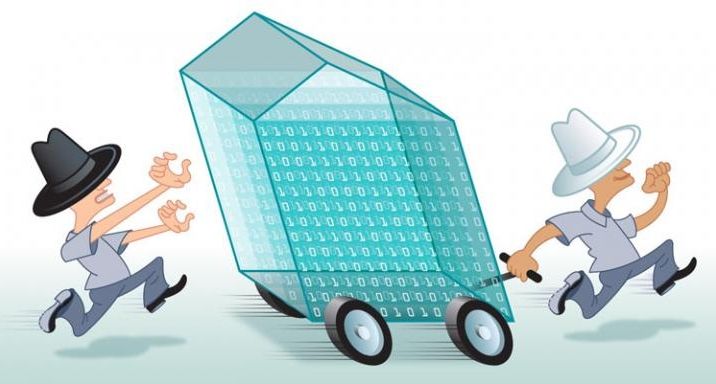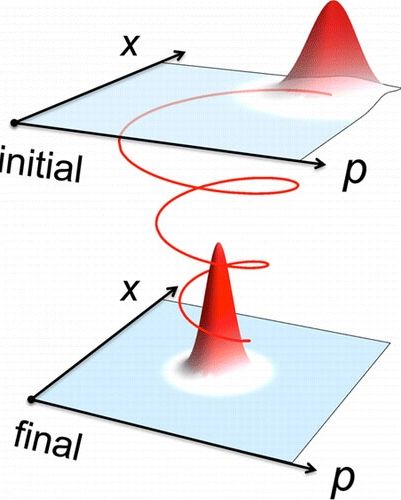MIT biological engineers have developed an algorithm for building DNA nanoparticles automatically, paving the way to many more applications for “DNA origami.”



Perhaps it’s serendipitous, then, that the machines have finally arrived. Truly smart, truly impressive robots and machine learning algorithms that may help usher in a new Green Revolution to keep humans fed on an increasingly mercurial planet. Think satellites that automatically detect drought patterns, tractors that eyeball plants and kill the sick ones, and an AI-powered smartphone app that can tell a farmer what disease has crippled their crop.
Forget scarecrows. The future of agriculture is in the hands of the machines.
A Digital Green Thumb
Deep learning is a powerful method of computing in which programmers don’t explicitly tell a computer what to do, but instead train it to recognize certain patterns. You could feed a computer photos of diseased and healthy plant leaves, labeled as such. From these it will learn what diseased and healthy leaves look like, and determine the health of new leaves on its own.

Math isn’t everyone’s strong suit, especially those who haven’t stretched that part of their brain since college. Thanks to the wonders of image recognition technology, we now have Mathpix, an iOS app that lets you point your phone camera at a problem and calculates solutions in seconds.
The interface looks like any standard camera app: simply drag the on-screen reticle over the equation and the app solves it and provides graph answers where appropriate. More useful is a step-by-step guide offering multiple methods to reach a solution, making this a bona fide educational tool. It uses image recognition to process problems and pings its servers to do the mathematical heavy lifting, so it likely requires an internet connection to work.
Mathpix was envisioned by Stanford PhD student Nico Jimenez, who was advised by Stanford grad Paul Ferrell. The app’s other developers are high schoolers Michael Lee and August Trollback, which is impressive for an app that claims to be the first to visually recognize and solve handwritten math problems.

New spin on all things that are Singular. Hmmm — so if Singularity becomes a religion; is Ray Kurzweil its God?
A colleague forwarded John Horgan’s recent Scientific American article, “The Singularity and the Neural Code.” Horgan argues that the intelligence augmentation and mind uploading that would lead to a technological singularity depend upon cracking the neural code. The problem is that we don’t understand our neural code, the software or algorithms that transform neurophysiology into the stuff of minds like perceptions, memories, and meanings. In other words, we know very little about how brains make minds.

I am glad that D. Whyte recognizes “If quantum computers are developed faster than anticipated, certification would mandate insecure modules, given the time to approve and implement new quantum resistant algorithms. Worse, it is conceivable that data encrypted by a certified module is more vulnerable than data encrypted by a non-certified module that has the option of using a quantum-safe encryption algorithm.”
Because many of us who are researching and developing in this space have seen the development pace accelerated this year and what was looking like we’re 10 years away is now looking like we’re less than 7 years.
Dr. William Whyte, Chief Scientist for Security Innovation, a cybersecurity provider and leader in the 2015 Gartner Magic Quadrant for Security Awareness Training, will be presenting at the Fourth International Cryptographic Module Conference in Ottawa, Ontario.

Australian physicists’ team has developed a new research assistant to carry out experiments in quantum mechanics in an artificial intelligence (AI) algorithm form, which quickly took control of the experiment, learned the job tasks and even innovated. In a statement, co-lead researcher Paul Wigley from the Australian National University (ANU) Research School of Physics and Engineering, said he didn’t expect that the machine would be able to conduct the experiment itself from scratch within an hour.
He added that in case a simple computer program had been used, it would have taken much more time than the age of the universe to go through all the combinations and work on it.
Scientists were looking forward to reconstruct an experiment that was awarded the 2001 Nobel Prize in Physics, which included very cold gas trapped in a laser beam called a Bose-Einstein condensate.

Given the fact that Los Alamos Labs have been and continue to advance cyber security work on the Quantum Internet as well as work in partnerships with other labs and universities; so, why isn’t Mason not collaborating with Los Alamos on developing an improved hacker proof net? Doesn’t look like the most effective and cost efficient approach.
Imagine burglars have targeted your home, but before they break in, you’ve already moved and are safe from harm.
Now apply that premise to protecting a computer network from attack. Hackers try to bring down a network, but critical tasks are a step ahead of them, thanks to complex algorithms. The dreaded “network down” or denial of service message never flashes on your screen.
That’s the basic idea behind new research by George Mason University researchers, who recently landed some $4 million in grants from the Defense Advanced Research Projects Agency (DARPA). George Mason’s researchers are leading an effort that includes Columbia University, Penn State University and BAE Systems.

Theoretical chemists at Princeton University have pioneered a strategy for modeling quantum friction, or how a particle’s environment drags on it, a vexing problem in quantum mechanics since the birth of the field. The study was published in the Journal of Physical Chemistry Letters (“Wigner–Lindblad Equations for Quantum Friction”). “It was truly a most challenging research project in terms of technical details and the need to draw upon new ideas,” said Denys Bondar, a research scholar in the Rabitz lab and corresponding author on the work.
Researchers construct a quantum counterpart of classical friction, a velocity-dependent force acting against the direction of motion. In particular, a translationary invariant Lindblad equation is derived satisfying the appropriate dynamical relations for the coordinate and momentum (i.e., the Ehrenfest equations). Numerical simulations establish that the model approximately equilibrates. (© ACS)
Quantum friction may operate at the smallest scale, but its consequences can be observed in everyday life. For example, when fluorescent molecules are excited by light, it’s because of quantum friction that the atoms are returned to rest, releasing photons that we see as fluorescence. Realistically modeling this phenomenon has stumped scientists for almost a century and recently has gained even more attention due to its relevance to quantum computing.
